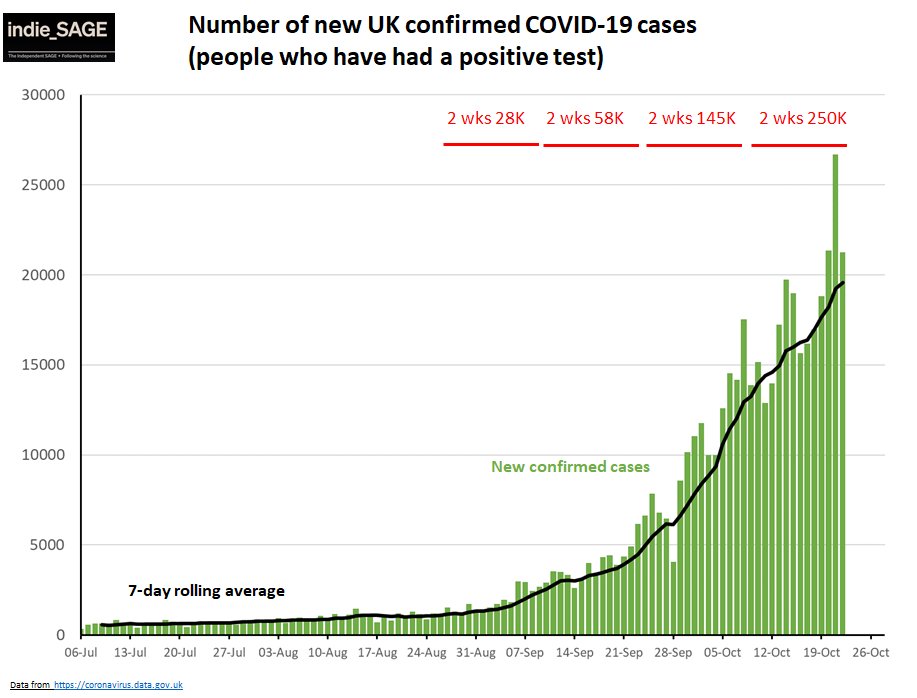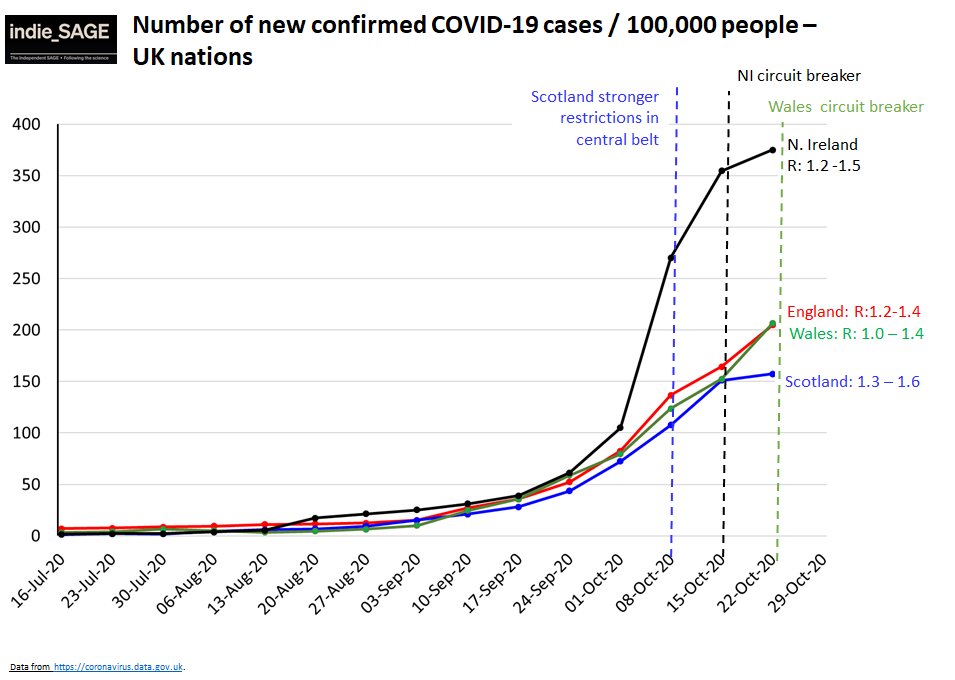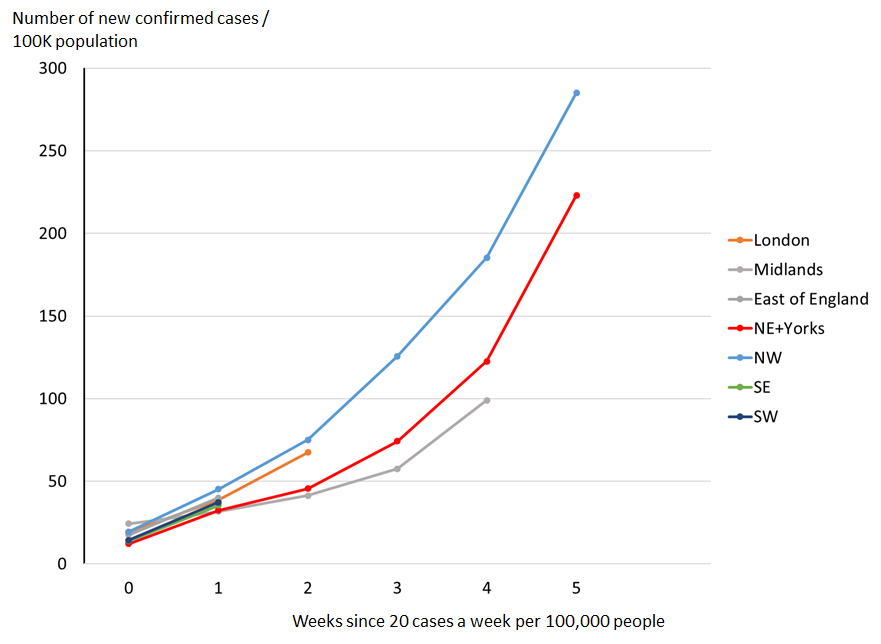
THREAD: quick look at how some European countries are doing & what we can learn from restrictions... NB there are general "work from home" advisories in all countries, but not clear how much people are. Slight differences in mixing rules. Thanks to @lmortshepherd for the charts!
1. Netherlands - cases went up rapidly from Sept & they tried regional curfews on bars & restaurants. These became national curfews but cases kept going up. Partial lockdown (schools + uni open) started mid October. 2 weeks later cases peaked and are now reducing. 

2. France - Again cases started rising in Set and regional bar & restaurant closures were tried. Then national curfews. These were not stopping the spread and lockdown started a week ago - schools open. Today they had another record case day but early days. 

3. Ireland - levels in 1st pic, cases 2nd. They tried Level 2, then regional Level 3, moved to national Level 3 (closed bars/rests, minimal mixing).Highest Level 5 (lockdown but schools open) started 2 weeks ago. Cases prob started reducing under Level 3 & rapidly reducing now. 



4. Scotland. Strong restrictions nationally (curfews on bars/restaurants, limits on alcohol & mixing) in mid October & stronger restrictions in central belt (inc no alcohol). Schools open. Most effect in central belt. Now moved to levels gov.scot/publications/c… 

So? Looks like curfews on bars/restaurants don't do that much on their own. Combined with limits on alcohol nd limited household mixing, working from home, other closures can slow & reverse growth. Takes a few weeks to show have effect! Reductions in cases not nec that fast.
• • •
Missing some Tweet in this thread? You can try to
force a refresh









